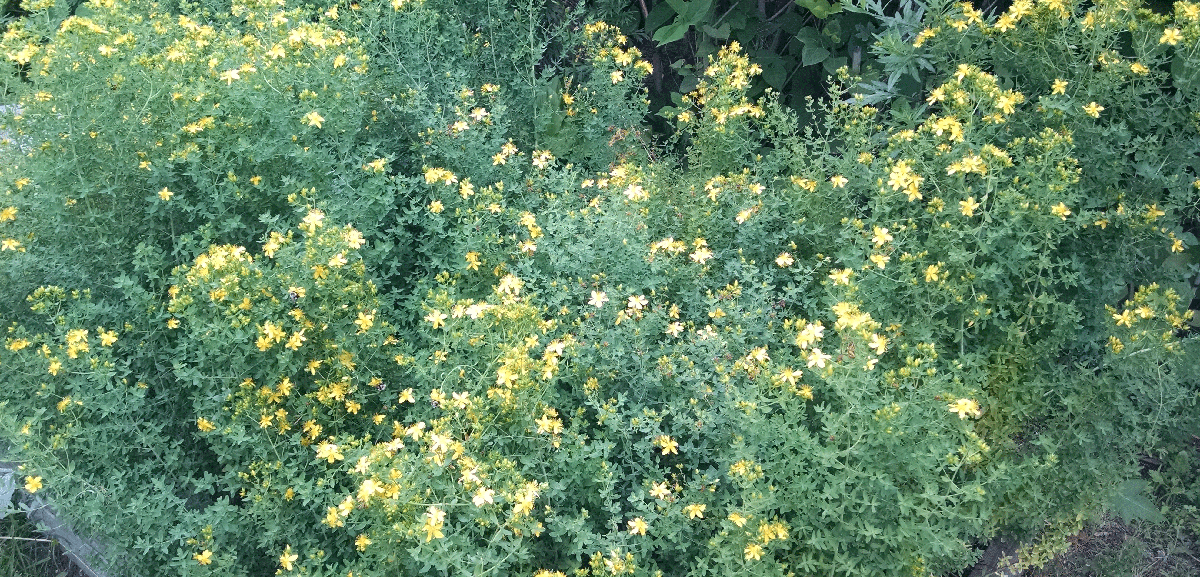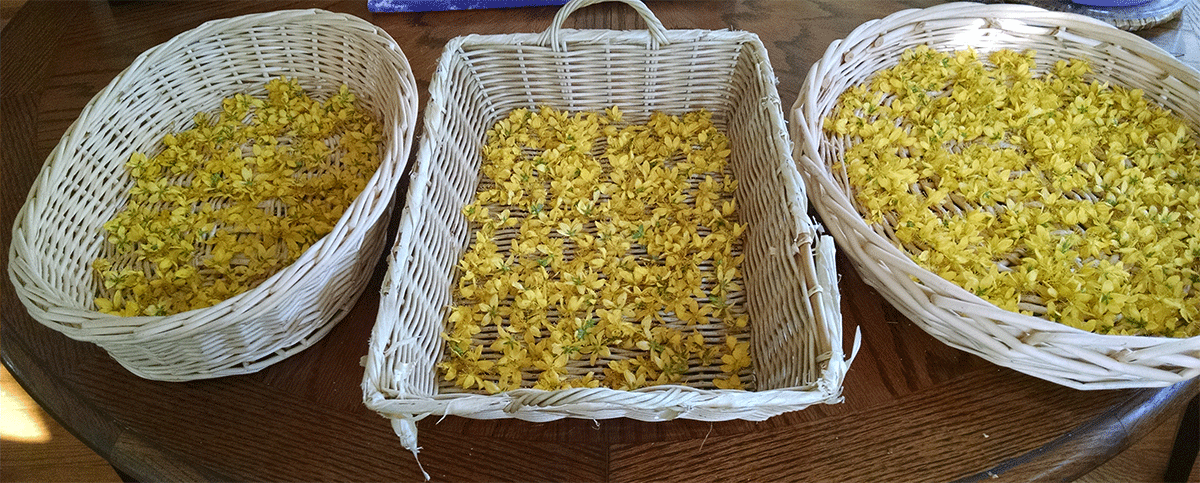
Organically grown St. John’s Wart in my garden.
Most people associate St. John’s Wort as a treatment for mild to moderate depression, but Ancient Greek and Roman doctors used it to treat wounds. Throughout the Middle Ages it was also used in this way and Native Americans also recognized its topical value.
Recently, I completed my annual daily task of harvesting my organically grown St. John’s Wort flowers to produce a fabulous massage oil to use in my practice. St. John’s Wort is highly regarded by herbalists as an effective topical remedy. It is massaged into the skin to relieve pain and inflammation. I infuse the flowers in oil; food-grade grape seed oil or sunflower seed oil (depending on availability) for a period of several weeks.
Each day I gather enough flowers to make one jar. The flowers which are about one inch and bright yellow are highly perishable, lasting only for one day, must be harvested early in the morning before the sun weakens their medicinal potency. After air-drying for a few hours just until the blossoms begin to wilt, I fill a mason jar, cover the flowers in oil, then place the jar outside in the sun and cover it with an inverted terra-cotta flower pot. Heat allows the red pigment, hypericum, to turn the oil ruby red.

Air drying the St. John’s Wart flowers after harvest is part of the process I use to make my massage oil.
The oil is later strained and stored or made into an ointment for wounds, bruises, burns and insect bites. Studies have confirmed it eases inflammation of the skin and fights bacteria. I have found it to be effective for arthritis pain as well. One caveat, however, St. John’s Wort can cause photosensitivity in some individuals so caution is advised to avoid sun exposure during use.
There are over 300 species of the genus Hypericum but only the one which contains the medicinal constituent is Hypericum Perforatum , so named because of the tiny opaque spots on the foliage. The plant has a flowering period from about June 24(the birthday of John the Baptist, hence its common name; wort is the Old English word for plant) until about mid to late August depending on weather conditions. It is a hardy, but short-lived perennial.
I use my St. John’s Wart oil with some of my massage services and the oil is available for sale at QWellness Massage. Contact me to purchase.

